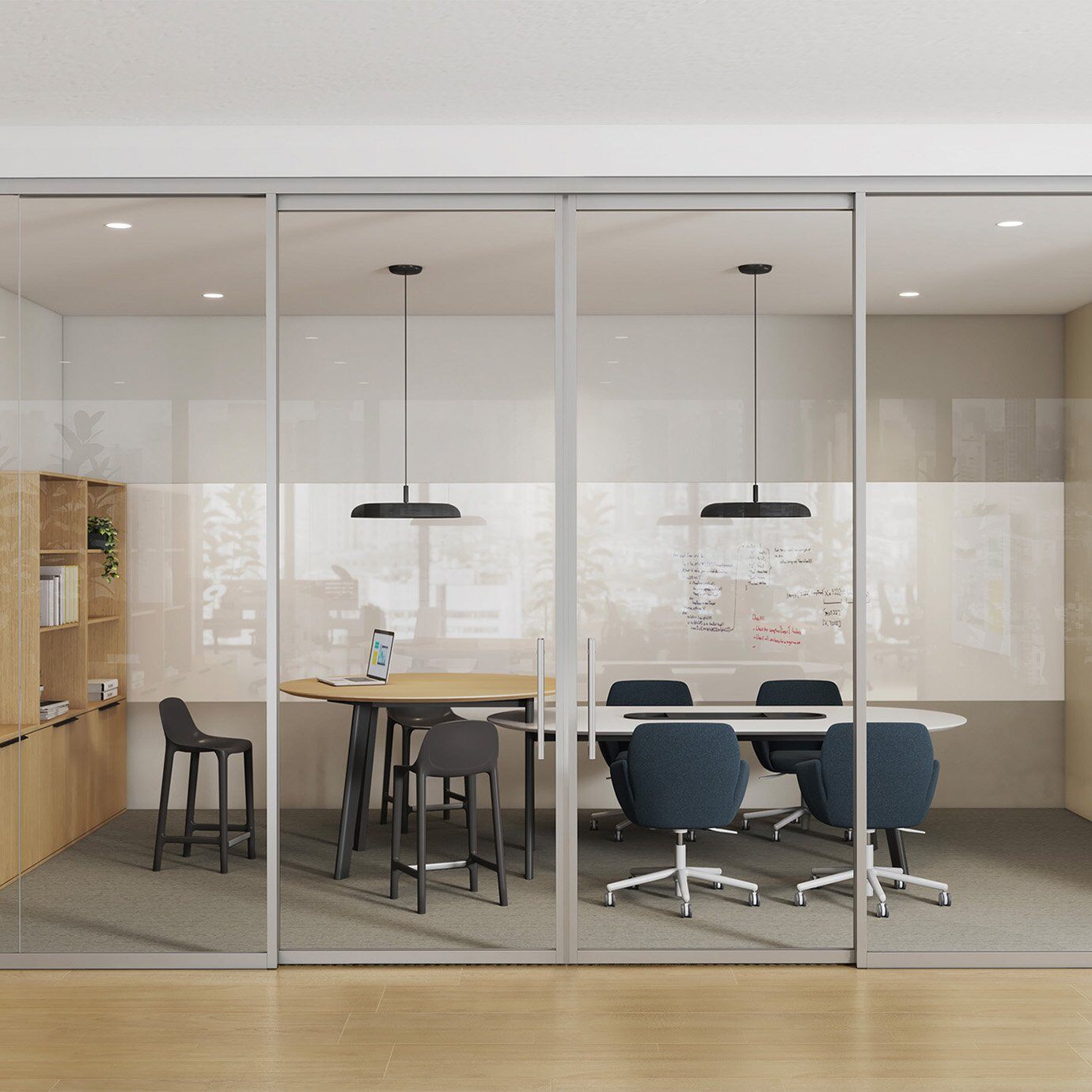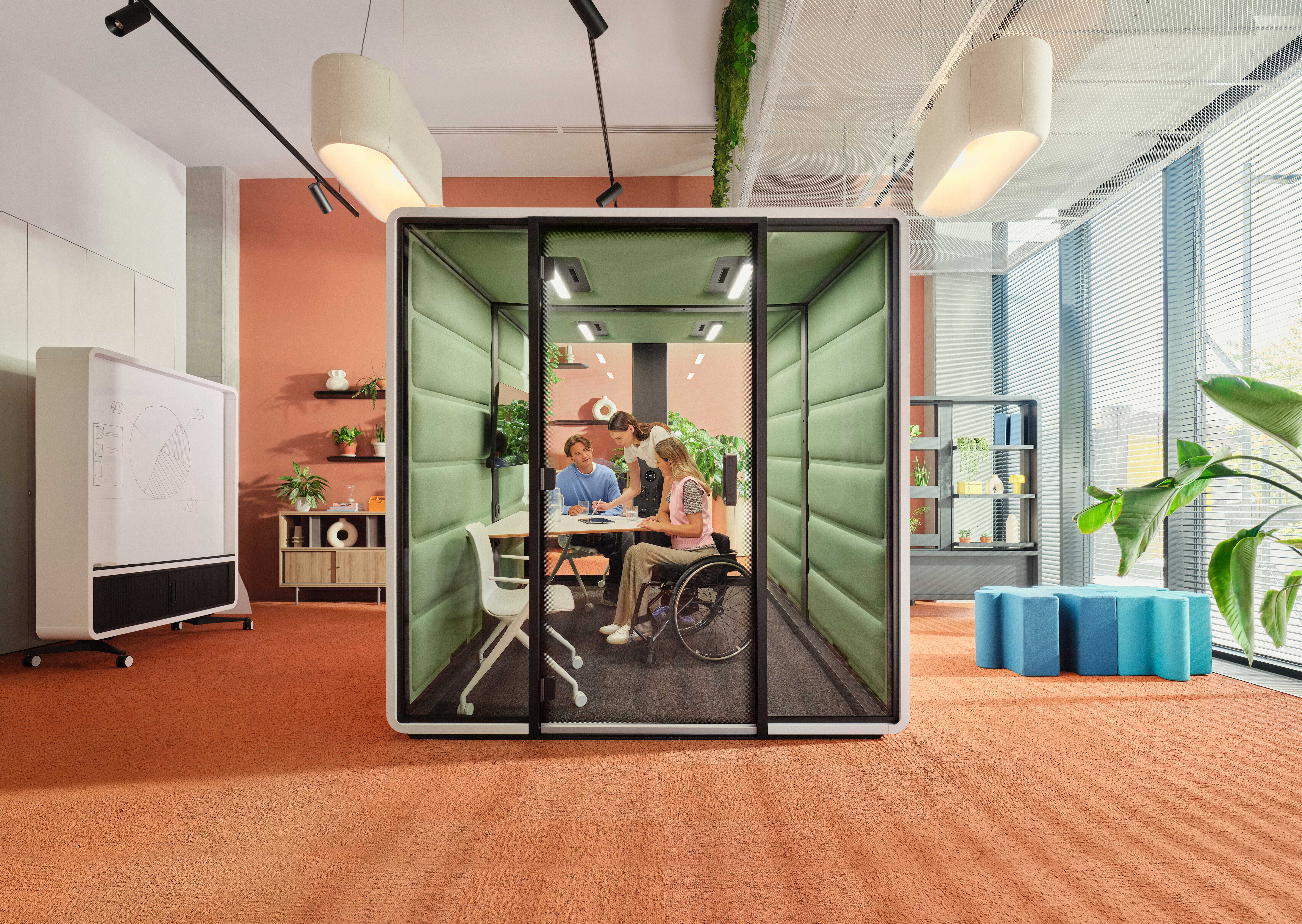Enhance workspace flexibility, save time and money on builds and renovations.

What are Architectural Interior Solutions?
Architectural interiors bring adaptability and innovation to your workspace, offering solutions like moveable walls, office pods, window treatments, and sound masking systems. These modular options are designed to enhance productivity, privacy, and comfort while allowing you to create a space that works seamlessly for your team.
Whether it’s improving acoustics, providing quiet zones, or optimizing your office layout, these solutions are versatile enough to meet the demands of daily operations. They reduce construction time and costs while allowing you to reconfigure spaces, minimizing downtime and maximizing your investment easily.
With sleek, professional designs and the ability to transform as your needs change, architectural interiors eliminate the hassle of permanent construction and ensure your workspace supports success—today and in the future.
Featured Products

Ready to Hush the Noise and Amplify Productivity Levels?
Acoustic, visual, and architectural privacy are interrelated.
Which is good news! Because it means many office privacy solutions are versatile, unlocking multiple benefits at once.
Office Interiors Offers the Right Modular Space Solutions for Your Office.
Modular office solutions can quickly enhance any leased or owned workspace. We’re pleased to work with the best names in modular spaces to provide you with effective, configurable solutions that enhance productivity and increase employee satisfaction.
If you’re ready to transform your office space with practical, adjustable modular space solutions, contact the experts at Office Interiors today.

